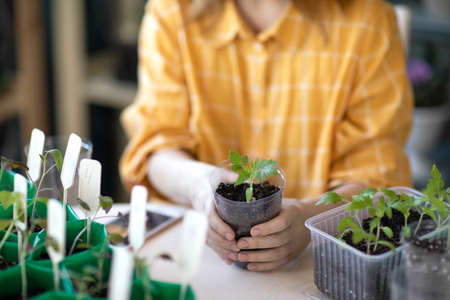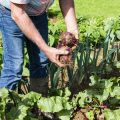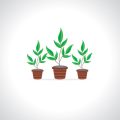1. Choosing the Wrong Location
One of the most common mistakes beginner gardeners make is picking a poor spot for their garden. It might seem like any patch of dirt will do, but choosing the right location can make or break your gardening success.
Why Location Matters
Many beginners underestimate the importance of sunlight, drainage, and spacing. Different plants have different needs, and understanding these basics will help you avoid frustration later on.
Key Factors to Consider
| Factor | What to Look For | Why It Matters |
|---|---|---|
| Sunlight | 6-8 hours of direct sun per day for most vegetables and flowers | Too little sun leads to weak, leggy plants with fewer blooms or fruits |
| Drainage | Soil that doesn’t stay soggy after rain or watering | Poor drainage can cause root rot and other diseases |
| Space | A wide enough area so plants aren’t overcrowded | Crowding reduces airflow and increases risk of pests and disease |
Tips for Picking the Right Spot
- Observe Sun Patterns: Spend a day tracking how much sun your potential garden area gets.
- Avoid Low Spots: Water tends to collect in dips, which can drown plant roots.
- Stay Close to Water: Choose a spot within easy reach of a hose or watering can.
- Think About Access: Make sure it’s easy to get to your garden for regular care and harvesting.
Pro Tip:
If youre unsure about sunlight levels, try using a sunlight meter or even a smartphone app that tracks light exposure throughout the day. This small step can save you from big disappointments later on.
2. Overwatering or Underwatering
Watering mistakes are one of the most common issues for new gardeners. It might seem simple—just give your plants some water, right? But knowing how much and how often to water is key to keeping your garden healthy and thriving.
How to Check Soil Moisture
The easiest way to know if your plant needs water is to check the soil. Stick your finger about 1–2 inches into the soil. If it feels dry at that depth, it’s time to water. If its still moist, wait a day or two and check again.
Soil Moisture Test Guide
| Soil Feel | Action |
|---|---|
| Dry and crumbly | Water your plant |
| Moist but not soggy | No need to water |
| Wet and muddy | Hold off on watering |
Proper Irrigation Techniques
Avoid shallow watering that only wets the surface. Instead, water deeply so moisture reaches the roots. Water early in the morning to reduce evaporation and prevent fungal diseases. If youre using a hose, drip irrigation system, or watering can, aim at the base of the plant rather than spraying the leaves.
Understanding Seasonal Watering Needs
Your gardens watering schedule should change with the seasons. In hot summer months, plants may need more frequent watering. In cooler weather or during rainy periods, you might need to cut back. Different plants also have different needs—succulents need much less water than vegetables or flowers.
General Seasonal Watering Tips
| Season | Watering Frequency |
|---|---|
| Spring | 2–3 times per week (depending on rainfall) |
| Summer | Daily or every other day (especially in full sun) |
| Fall | 1–2 times per week (monitor soil moisture) |
| Winter | Rarely; only during dry spells if ground isn’t frozen |
Tip:
If youre unsure, invest in a moisture meter—its an inexpensive tool that takes the guesswork out of watering!
![]()
3. Neglecting Soil Health
Healthy soil is the foundation of a successful garden, but many beginners overlook it. Its easy to get excited about planting without checking if your soil can actually support plant growth. Good soil provides nutrients, water retention, and structure for roots to grow strong. Without it, even the best seeds and most sunlight wont help your garden thrive.
Why Soil Health Matters
Your plants rely on the soil for everything—from food to water to stability. Poor soil leads to weak plants, pests, and low yields. Taking time to improve your soil before planting makes a big difference in how your garden performs over time.
How to Improve Soil Health
1. Add Compost Regularly
Compost is rich in nutrients and helps soil retain moisture while improving its texture. You can make your own compost using kitchen scraps, grass clippings, and leaves, or buy it from a local garden center.
2. Test Your Soil’s pH Level
Soil pH affects how well plants absorb nutrients. Most vegetables prefer a slightly acidic to neutral pH (around 6.0–7.0). You can buy an affordable soil test kit at any hardware store or send a sample to your local cooperative extension office for more detailed results.
3. Know Your Local Soil Type
The type of soil you have depends on where you live in the U.S., and each type has its pros and cons:
| Soil Type | Description | Common Regions in U.S. | Tips for Improvement |
|---|---|---|---|
| Sandy Soil | Drains quickly, low in nutrients | Southeast (Florida), parts of Southwest | Add organic matter like compost to improve water retention |
| Clay Soil | Heavy, holds water but poor drainage | Midwest, parts of Northeast | Add compost and gypsum; avoid compacting the soil |
| Loamy Soil | Ideal mix of sand, silt, and clay; rich in nutrients | Many temperate regions across U.S. | Maintain with compost; monitor pH levels regularly |
Quick Tips for Healthy Soil
- Avoid walking on your garden beds to prevent compacting the soil.
- Rotate crops each season to prevent nutrient depletion.
- Add mulch to protect topsoil and retain moisture.
Focusing on your soils health early on sets you up for success in every gardening season that follows.
4. Planting at the Wrong Time
Timing is everything when it comes to gardening. One of the most common mistakes beginners make is planting too early or too late in the season. This can lead to frost damage, heat stress, or poor plant growth. To avoid these issues, its important to understand your local climate and follow proper planting schedules.
Understand Your USDA Hardiness Zone
The United States Department of Agriculture (USDA) has divided the country into hardiness zones based on average annual minimum temperatures. Knowing your zone helps you choose plants that will thrive in your area and lets you know the best time to start planting.
How to Find Your Zone:
- Visit the USDA Plant Hardiness Zone Map
- Enter your ZIP code to find your zone
- Use this information when buying seeds or plants
Follow a Planting Calendar
Each region has its own planting calendar based on average frost dates. These calendars help you determine when to start seeds indoors, when to transplant seedlings outside, and when to direct sow seeds in your garden.
Example: Frost Dates by Region
| Region | Average Last Spring Frost | Average First Fall Frost |
|---|---|---|
| Northeast (Zone 5-6) | May 1 – May 15 | Oct 1 – Oct 15 |
| Southeast (Zone 7-9) | Mar 15 – Apr 1 | Nov 15 – Dec 1 |
| Midwest (Zone 4-6) | Apr 15 – May 10 | Oct 1 – Oct 15 |
| Southwest (Zone 8-10) | Feb 15 – Mar 10 | Nov 15 – Dec 1 |
| Pacific Northwest (Zone 7-8) | Mar 20 – Apr 10 | Oct 20 – Nov 5 |
Avoiding Frost Damage and Heat Stress
If you plant too early in spring, your seedlings may be killed by a late frost. On the flip side, planting cool-season crops like lettuce or spinach too late in the summer can result in bolting due to excessive heat.
Tips to Stay on Track:
- Use seed packets: They usually include recommended planting times based on zones.
- Start seeds indoors: Begin growing sensitive plants like tomatoes inside before the last frost date.
- Cloches or row covers: Protect young plants from unexpected cold snaps.
- Avoid midday planting in summer: Transplant in the early morning or evening to reduce heat stress.
A little planning goes a long way—by understanding your zone and using local planting calendars, youll give your garden the best possible start.
5. Ignoring Plant Labels and Care Instructions
Beginners often overlook the information provided on plant tags, but those small labels carry big value. Whether you’re picking up a plant at your local nursery or ordering online, the label is your first guide to making sure your new plant thrives in your garden.
Why Plant Tags Matter
Plant tags are like cheat sheets for success. They tell you important details such as:
- Sunlight Requirements: Full sun, partial shade, or full shade.
- Watering Needs: How often and how much to water.
- Mature Size: Helps plan spacing and placement.
- Spacing Guidelines: Prevents overcrowding and disease.
- Growth Habit: Whether it spreads, climbs, or stays compact.
How to Read a Plant Label
Here’s a quick breakdown of what you’ll typically find on a plant tag and what it means for your garden:
| Label Section | What It Tells You | Why It Matters |
|---|---|---|
| Light Requirements | Full Sun (6+ hrs), Part Shade (3–6 hrs), Full Shade (<3 hrs) | Ensures proper growth and flowering |
| Watering Needs | Low, Moderate, or High Water Use | Avoids overwatering or underwatering |
| Mature Size | Height and Width at Full Growth | Affects spacing and layout planning |
| Spacing Instructions | Recommended distance between plants (in inches or feet) | Prevents overcrowding and promotes airflow |
| Hardiness Zone | USDA Zone Number (e.g., 5-9) | Tells if the plant can survive winter in your area |
| Growth Habit | Bushy, trailing, upright, climbing, etc. | Affects where and how to use the plant in design |
Tips for Applying Plant Tag Info in Your Garden
- Match light needs to your yard’s conditions: Observe which areas get sun all day versus those shaded by trees or buildings.
- Measure before planting: Use a tape measure or garden marker to ensure correct spacing.
- Avoid mixing incompatible plants: Don’t place a cactus next to a moisture-loving fern—different care needs make them poor neighbors.
- Create a garden journal: Keep track of each plants label info so you can refer back as needed.
- If tags are missing: Ask nursery staff or look up the plant online using its common or botanical name.
Poor planning due to skipped instructions can lead to overcrowded beds, sunburned leaves, or stunted growth. Taking just a few minutes to read each label sets you up for long-term gardening success.


